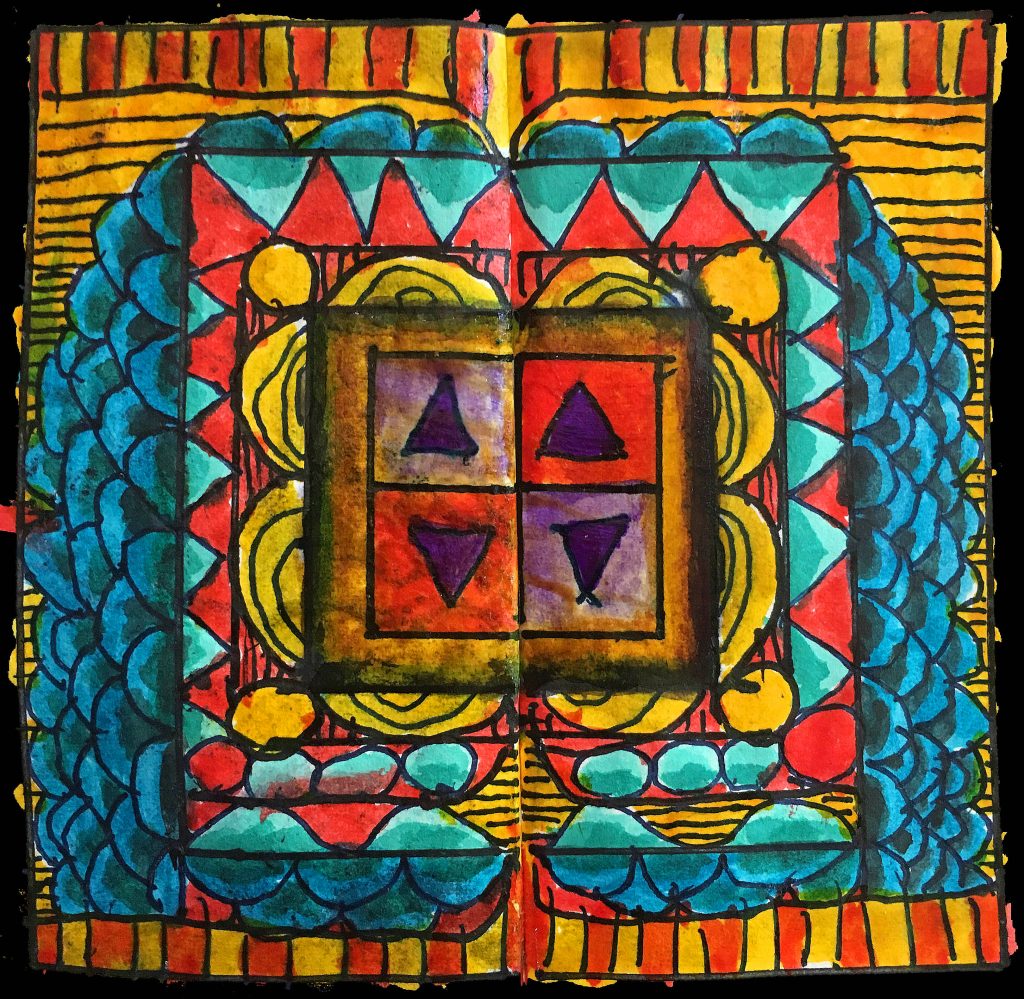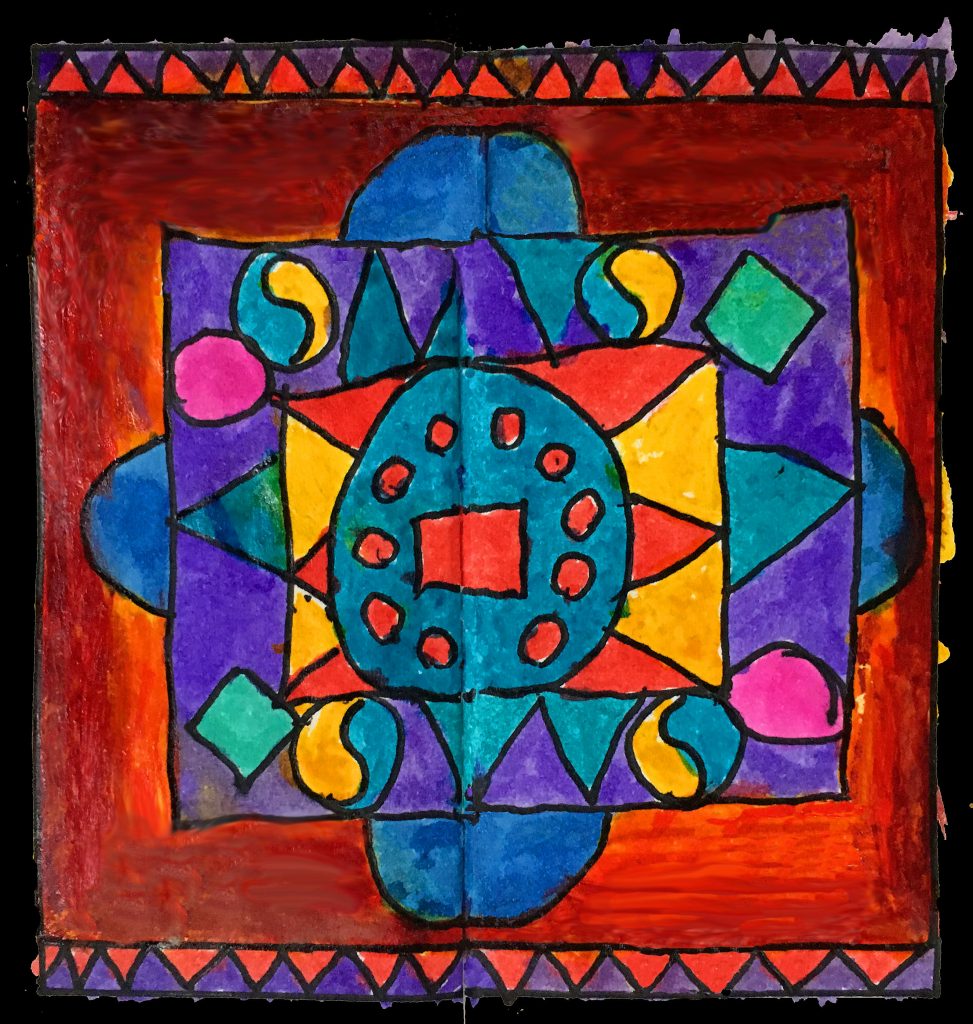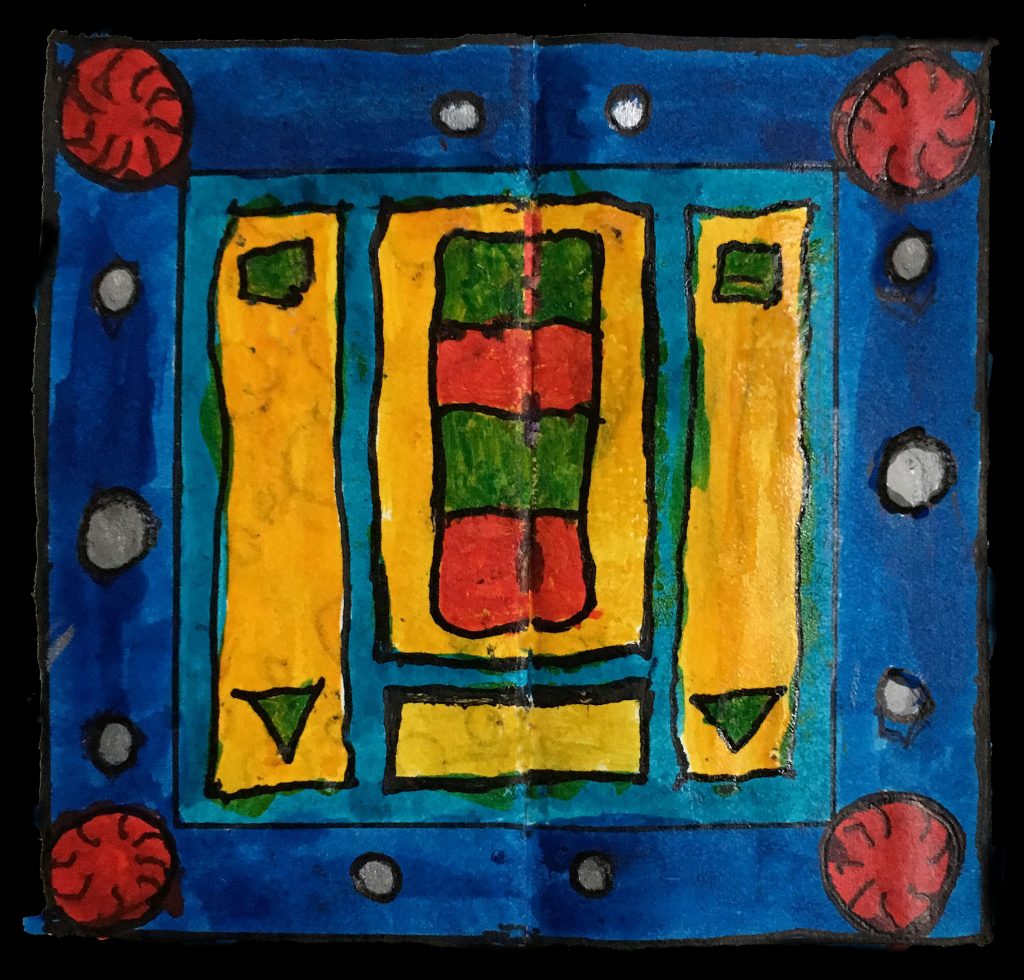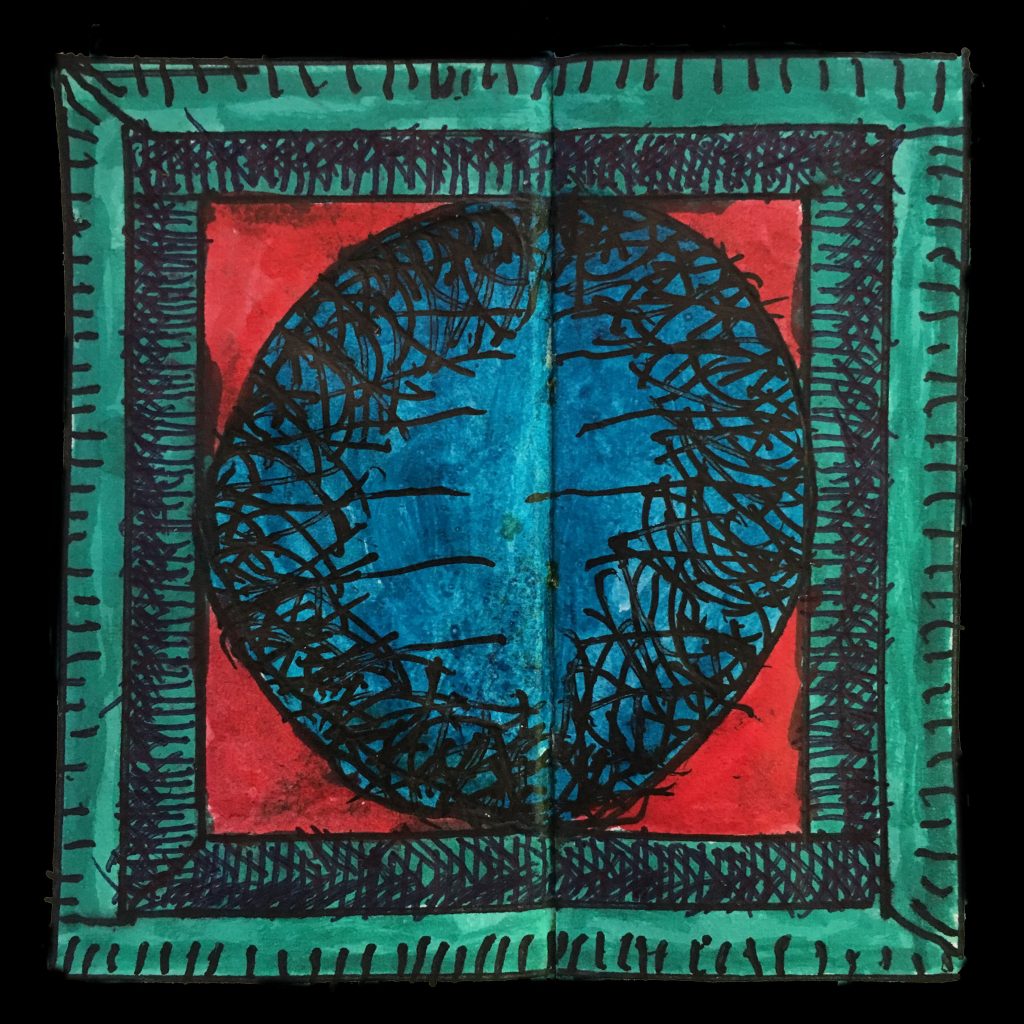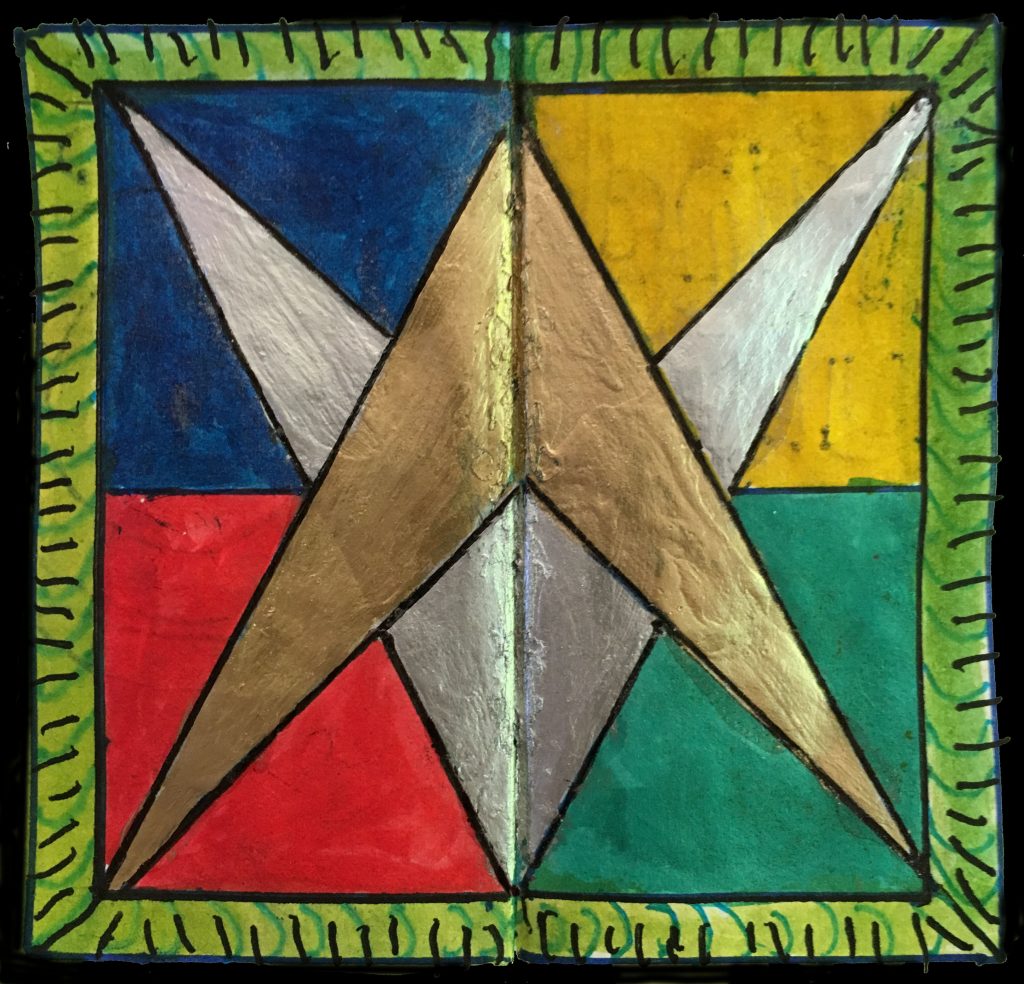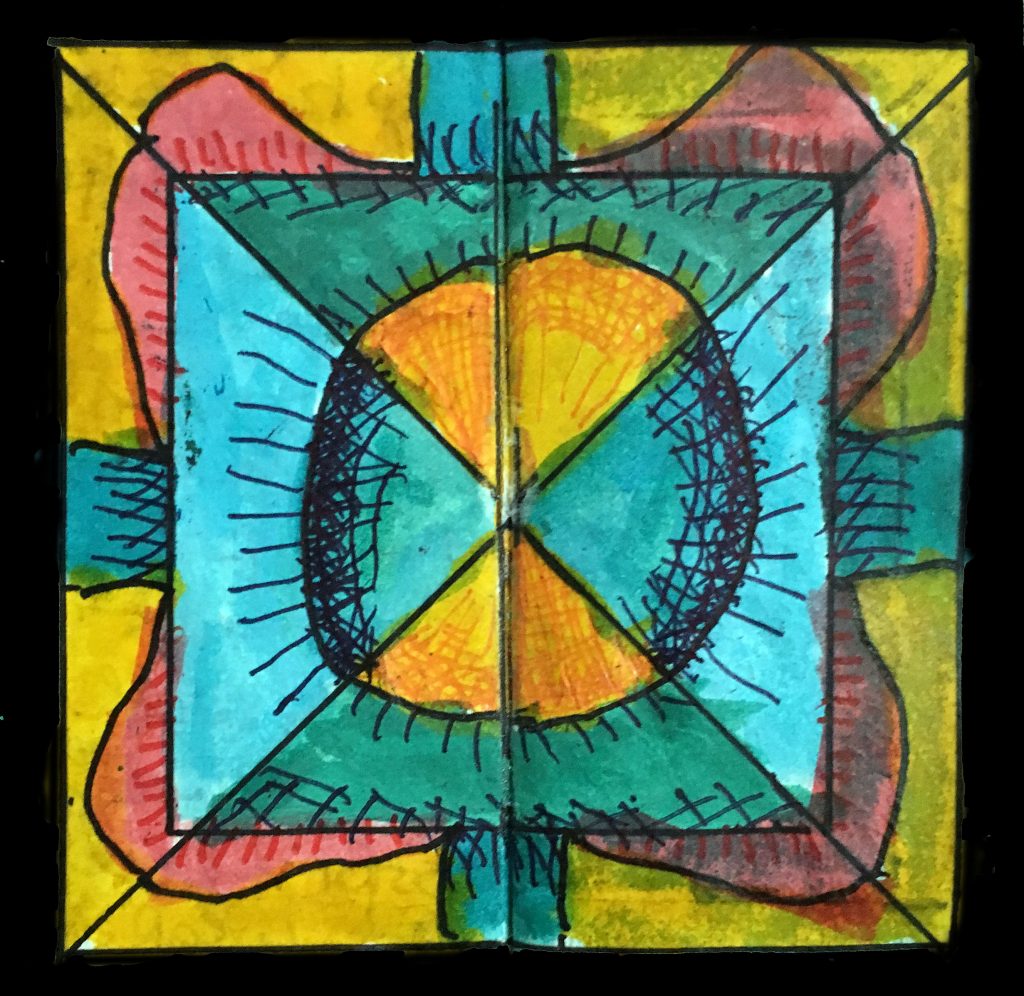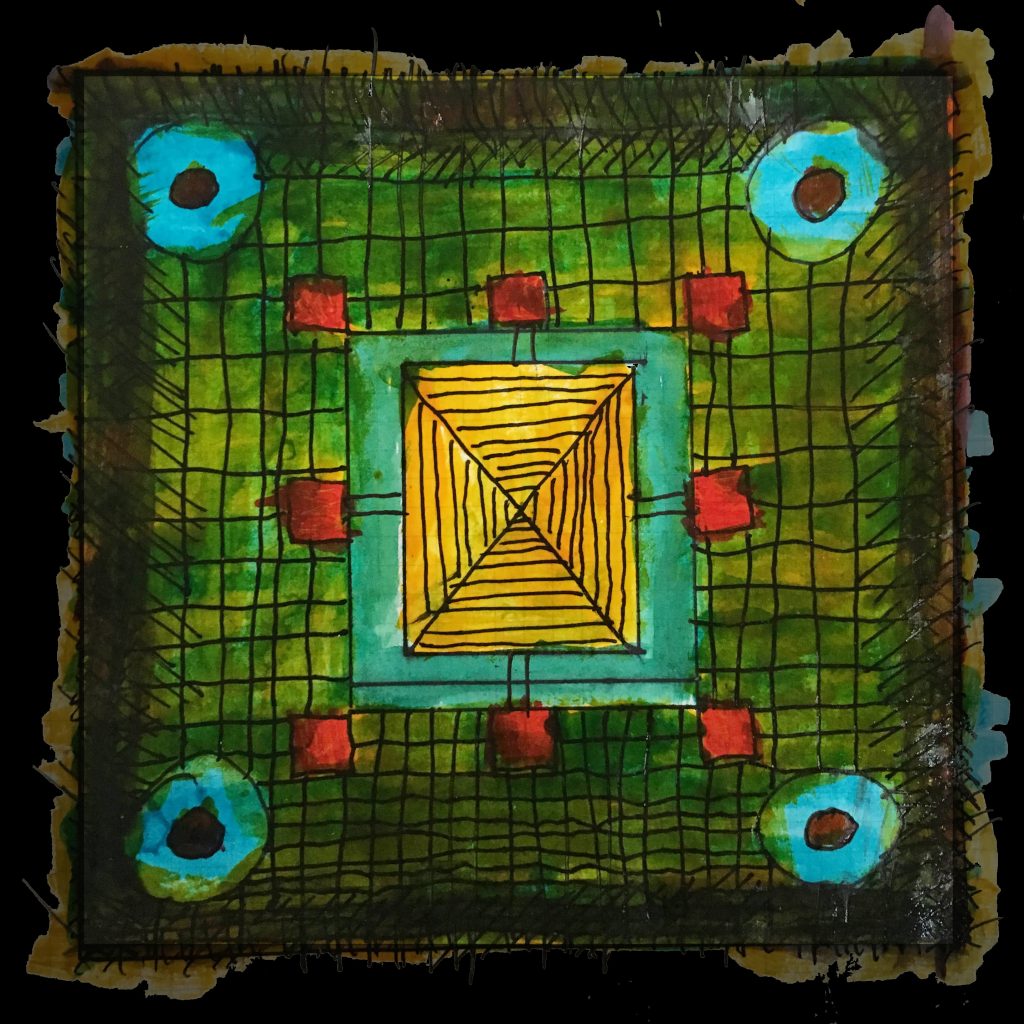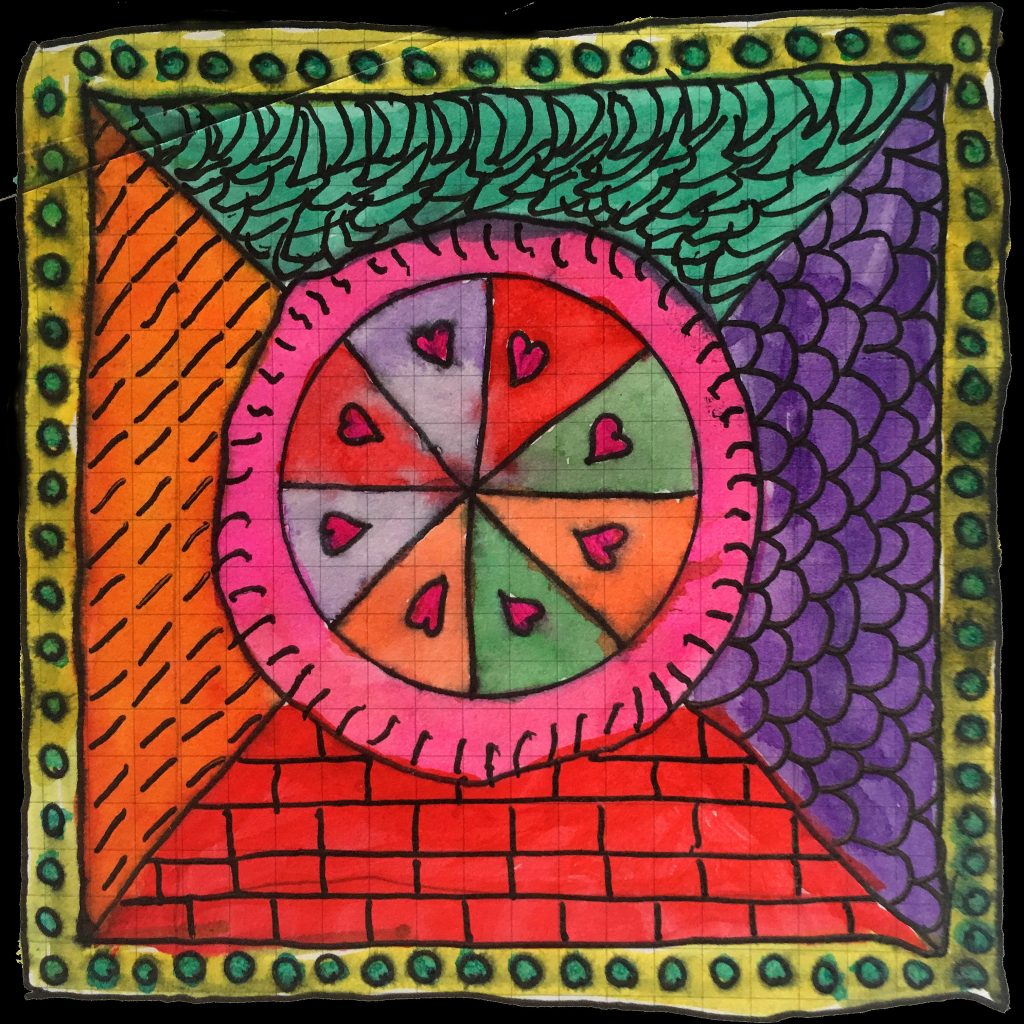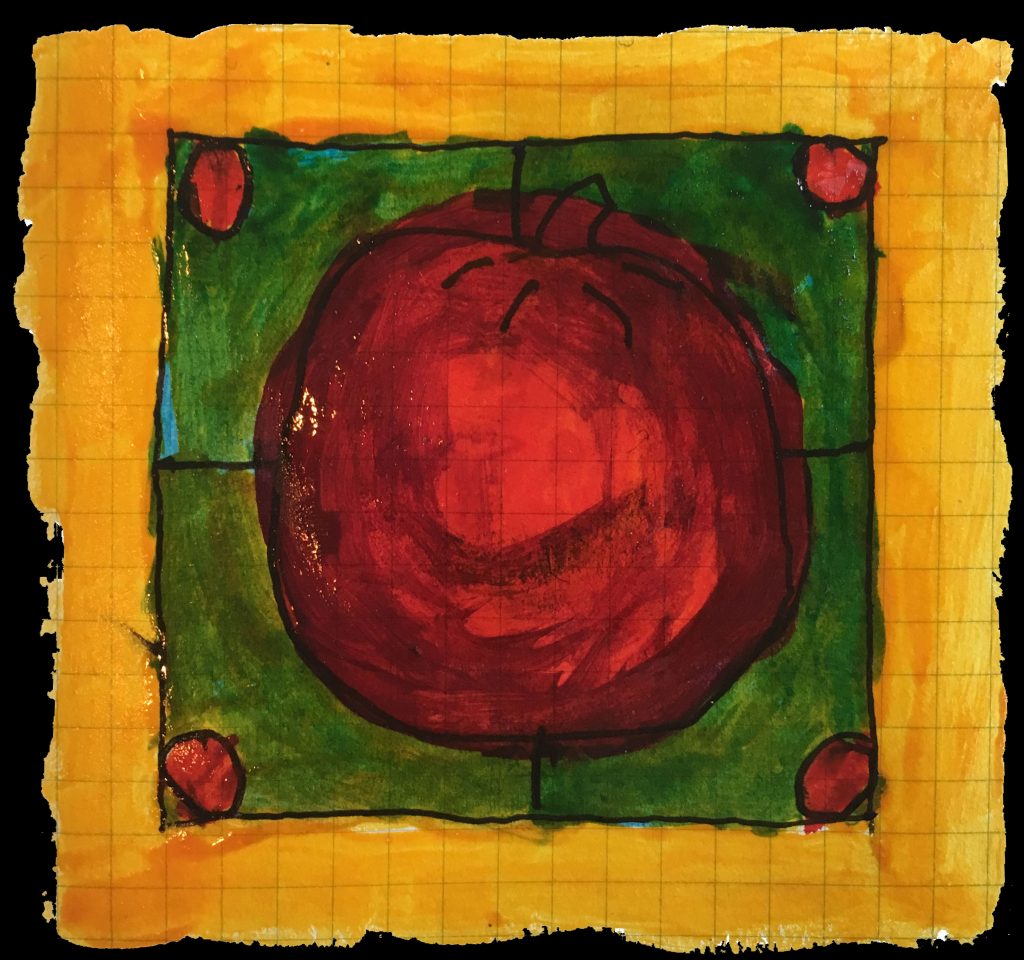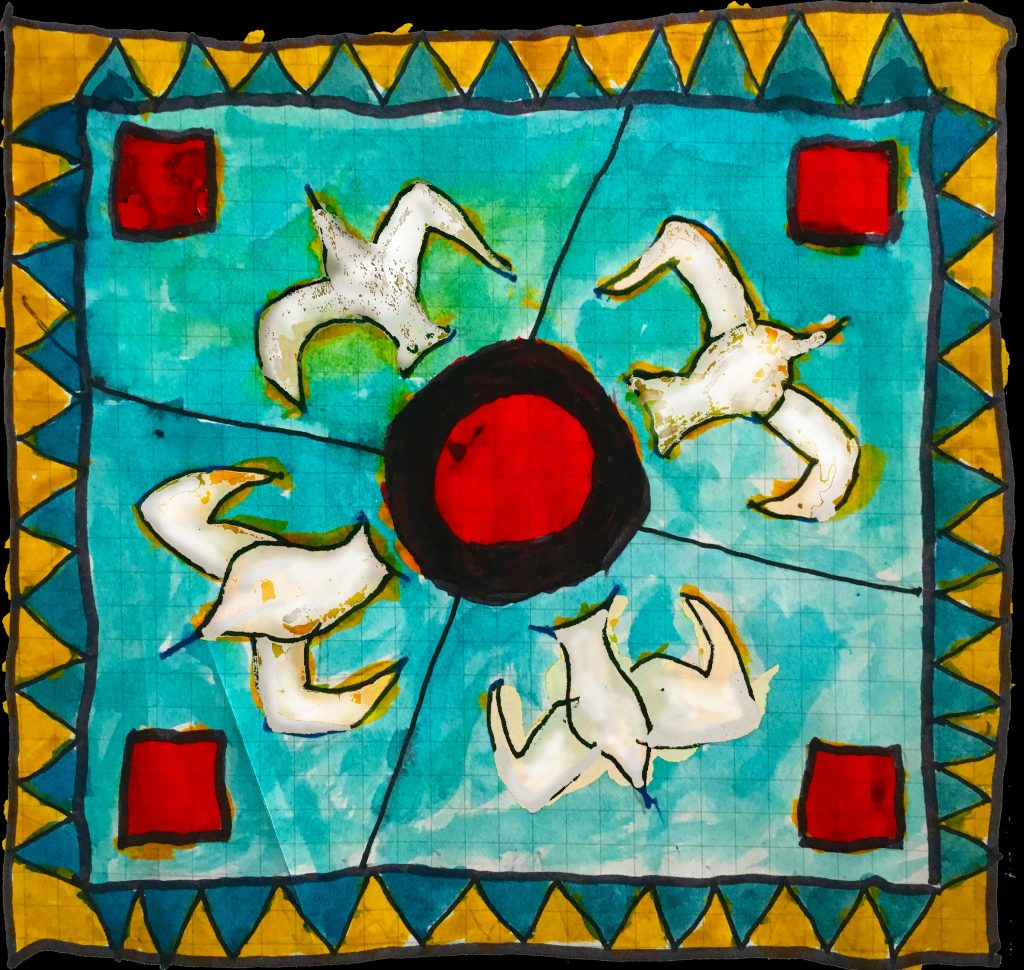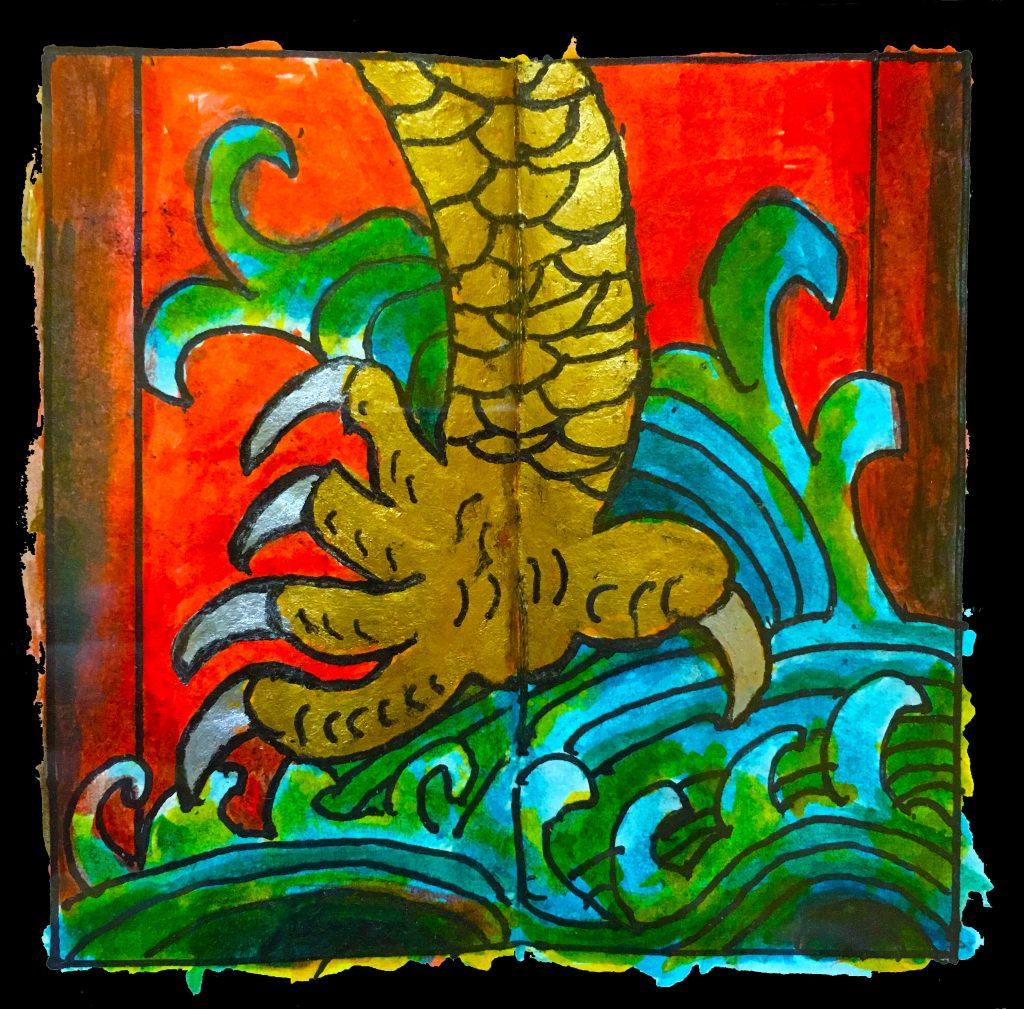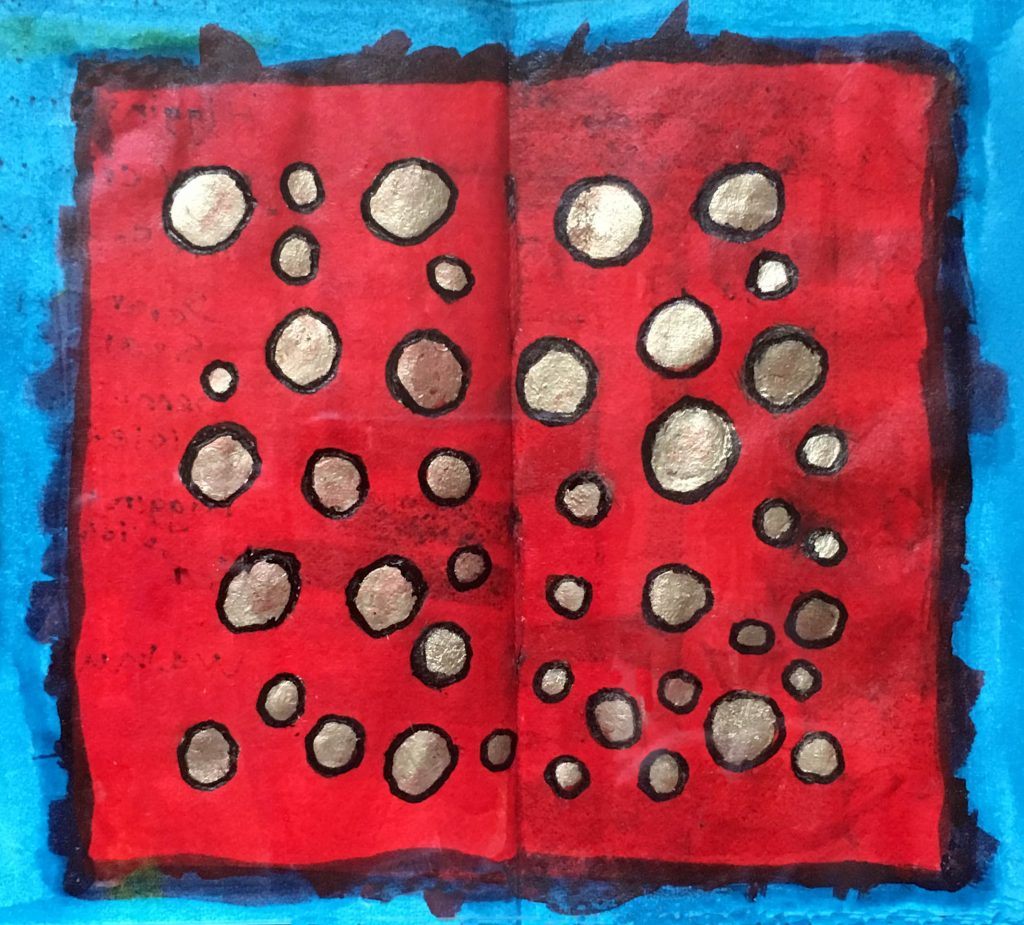Mandalas
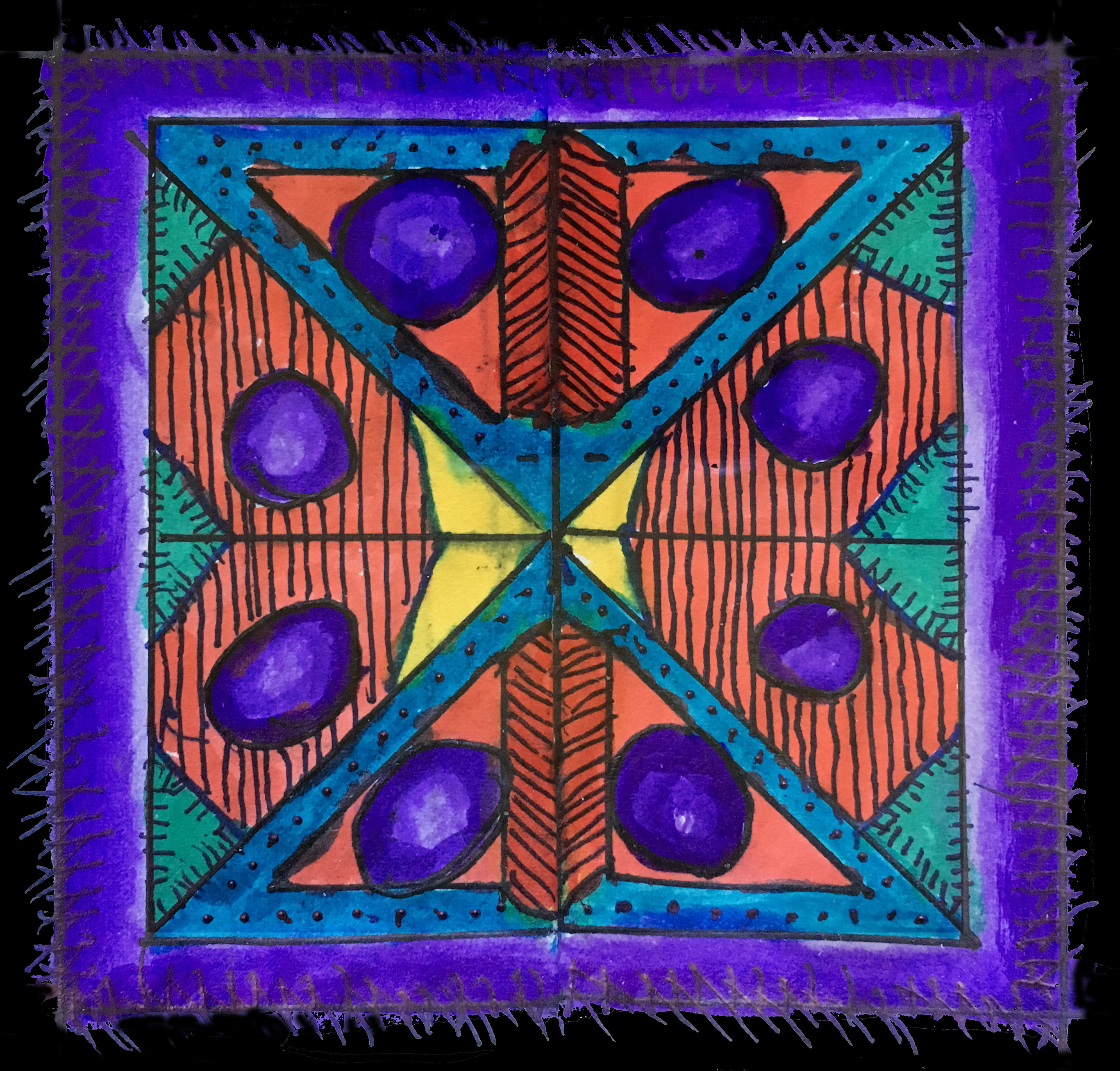
A mandala (Sanskrit: मण्डल, maṇḍala; literally “circle”) is a spiritual and ritual symbol in Hinduism and Buddhism, representing the universe. In common use, “mandala” has become a generic term for any diagram, chart or geometric pattern that represents the cosmos metaphysically or symbolically; a microcosm of the universe.
Western psychological interpretations
According to art therapist and mental health counselor Susanne F. Fincher, we owe the re-introduction of mandalas into modern Western thought to Carl Jung, the Swiss analytical psychologist. In his pioneering exploration of the unconscious through his own art making, Jung observed the motif of the circle spontaneously appearing. The circle drawings reflected his inner state at that moment. Familiarity with the philosophical writings of India prompted Jung to adopt the word “mandala” to describe these circle drawings he and his patients made. In his autobiography, Jung wrote:
“I sketched every morning in a notebook a small circular drawing, … which seemed to correspond to my inner situation at the time. … Only gradually did I discover what the mandala really is: … the Self, the wholeness of the personality, which if all goes well is harmonious.” — Carl Jung, Memories, Dreams, Reflections, pp. 195—196. Source: Wikipedia
For at least two decades I have included my mandala drawings in my notebooks—although unlike Carl Jung, my mandalas were made on a more sporadic schedule rather than every day. Even so, their creation was a therapeutic event, allowing me to express whatever feelings and thoughts might be harbored at a depth not immediately accessible. An added benefit for me appeared to be that it isn’t necessary to study the sketches at length in order to garner their therapeutic qualities—just the doing alone was enough. Here are a few examples:

